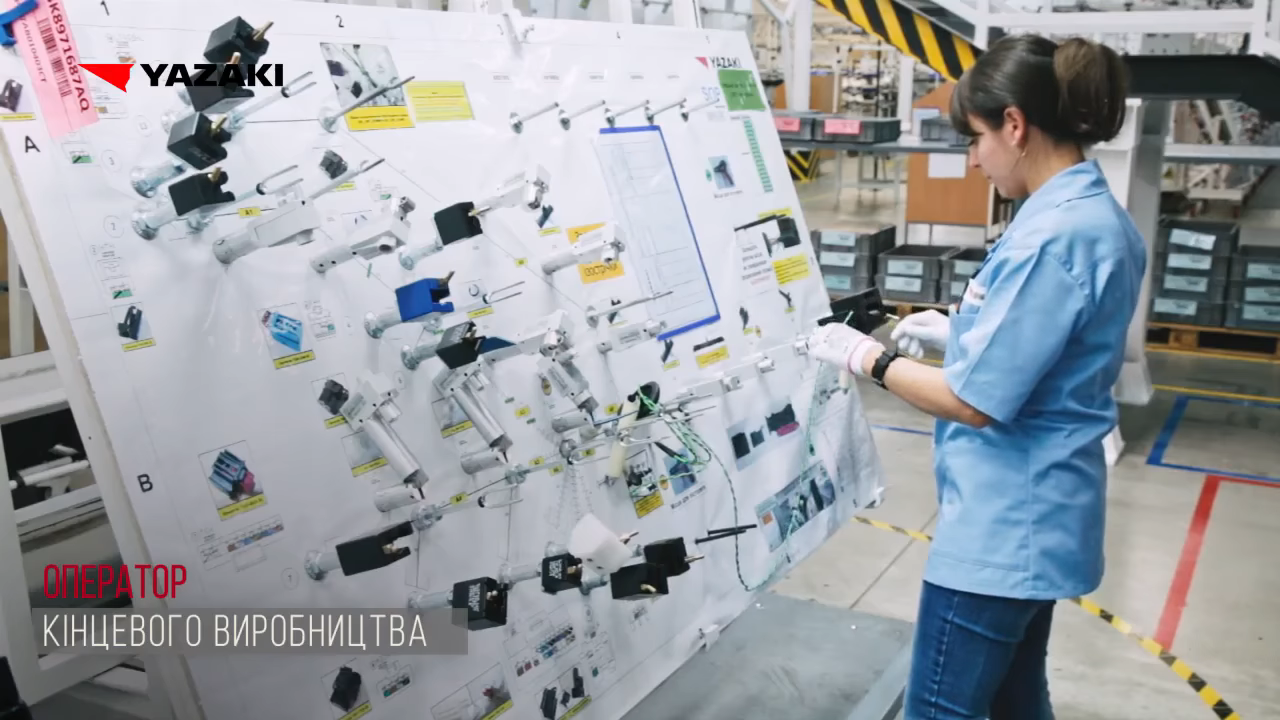Even from the pretty earliest times of the automobile age, autos and trucks have been hybrids of mechanical and electrical style. For every piston sliding up and down in a cylinder, there is a spark plug that desires to be fired at just the ideal time to make the engine do the job, and stepping on the brake pedal experienced better cause the brake lights to arrive on at the same time hydraulic pressure pinches the wheel rotors between the brake pads.
Without having electrical connections, a practical motor auto is a functional impossibility. Even extended ahead of electricity commenced getting the fuel of option for automobiles, the wires that join the pcs, sensors, actuators, and indicators wanted to operate a vehicle’s devices were acquiring much more and extra complex by the calendar year. Right after the motor and the body, a car’s wiring and electronics are its third most pricey ingredient, and it is believed that by 2030, totally 50 percent of the typical vehicle’s charge will be locked in its electrical process, up from 30% in 2010.
Earning confident all these indicators get where they are heading, and performing so in a harmless and trustworthy way is the career of a vehicle’s wire harnesses, the bundles of wires that seemingly occupy each individual possible space of a modern-day automobile. The design and style and manufacturing of wire harnesses is a complex method that relies on specialized software, a diploma of automation, and a shocking amount of people-energy.
Much more Wires Than At any time
The thought for this post arrived from a conversation I experienced with Elliot Williams, and an off-hand mention of a chat he experienced with an engineer who can make software program to design auto wire harnesses. My initially considered was, “There’s program to do that?” which was promptly adopted by “Of program there is software package to do that!”. The wiring needed to run a contemporary automobile is not one thing that can be done advert hoc — wire harnesses are highly engineered, both to handle the needs that will be put on them electrically, and mechanically engineered to not only fit in the house offered but to endure the rigors of probably many decades of use under tough environmental situations.

Wire harnesses also have to be manufacturable as independent elements. Car and truck producing is significantly only a closing assembly procedure, where by personnel include sections produced by agreement suppliers to a vehicle’s body as it rolls down the line. And in point, wire harnesses are amid the incredibly first components additional to the nascent auto, which is both evidence of their relevance to the finished product or service as effectively as explaining how tough it can be to accessibility some of them if they require to be serviced later.
The design of a wire harness starts very a great deal the way any sophisticated circuit design starts off: with a schematic. In most modern-day cars, fairly a lot almost everything talks to 1 or a lot more of possibly dozens of digital control modules, scattered about the vehicle to control every little thing from ignition timing and fuel injection to HVAC controls and infotainment system configurations. Wire harnesses have to be designed for just about every ECM, to supply electrical power and details connections to every sensor and actuator, with thought specified to sizing the wire for the load, giving correct ground connections, and building certain the proper connectors are utilized.
Interdimensional Design
Though the preliminary structure course of action of a wire harness can use extra or much less common EDA applications, eventually the two-dimensional schematic illustration of the harness has to be translated to the a few-dimensional framework of the car. For that work, a lot more specialized EDA and CAD equipment are used. A significant player in this entire world looks to be CATIA by Dassault Systèmes, which has the resources required to not only produce the 2D schematic but to translate it into the 3D area of a vehicle chassis. These resources allow the designer to build bundles of wires, incorporate connectors, define branches off of the major bundle, established the paths above which every single bundle will be laid, and glance for any contentions among the harness and the relaxation of the construction of the car. They also enable the designer to specify how the wires are going to be bundled with each other — tape wrap vs . wire loom, for case in point — and exactly where and how the harness will be attached to the car or truck.
Bodily restraint of the harness brings up yet another significant design thing to consider: slack. Creating the accurate amount of money of slack into every bundle and branch of a wire harness is significant. Far too a lot slack is wasteful, equally in conditions of the copper needed for the excess wire and in terms of diminished fuel effectiveness thanks to extra bodyweight. Excessive slack can also lead to actual physical damage to the harness thanks to abrasion on the vehicle body or frame associates, or by snagging on street hazards or even staying stepped on by passengers. Inadequate slack is a trouble, much too — wires that do not have some give could stretch and break as the auto frame twists and flexes, and wires that are far too restricted may possibly make it challenging to undo connectors for repairs. Harness EDA equipment are able of calculating the suitable amount of slack for a bundle, and of placing maintain-downs and restraints in the appropriate place to make guaranteed the wires flex just plenty of, but not also considerably.
When the 3D product of the harness is finalized, the structure has to be translated into some thing that can be made. And considering that the key production solutions utilised for wire harnesses all depend on the use of nail boards — additional on which down below — the painstaking 3D style and design has to be flattened back into a 2D drawing. CATIA has automatic resources for flattening, with the conclusion consequence getting a 2D drawing that details precisely exactly where just about every wire in a bundle will go, which pin in which connector it will terminate in, and where and what variety of components, like retaining clips, grommets, cable ties, or abrasion protection sleeves, will be additional. The output from the flattening approach represents a complete established of work instructions that can be sent to a contract maker.
Keeping in Very good Kind
With as automated as practically all production has come to be, primarily for motor autos, where manufacturing operates in the hundreds of hundreds are not uncommon, you’d assume that wire harness producing have to be completely automatic. Following all, how could a deal producer be predicted to preserve up with the volume of harnesses necessary by a modern motor vehicle plant, in particular with lean methodologies and just-in-time manufacturing? Undoubtedly there need to be substantial CNC machines that use the operate directions to spool out wires and bundle them all jointly — appropriate?
Incorrect. Right after the design phase, practically all wire harness producing is strictly a hands-on company. As it turns out, human dexterity and eye-hand coordination are really tricky to match with robots. Wire harness vegetation make use of 1000’s of staff to hand-assemble just about each individual piece of a wire harness. Certainly, there are instruments to assist, but most of them are applied to slash, strip, terminate, and coil up wire that will sooner or later be made use of by the human employees to develop the harness, a person wire at a time.
The standard way of building a wire harness is on a nail board. Also termed a sort board or harness board, this is essentially a massive flat area to which are attached a wide variety of fixtures to quickly maintain wires and connectors. The fixtures are laid out to stand for the flattened style and design of the harness, and instructions printed on the board exhibit which wires are to be routed where. Boards are usually labored on vertically, leaning back again at a slight angle to preserve wires from falling off prior to they’re secured.
1 employee hardly ever tends to make an overall wire harness. Instead, a chain of equivalent nail boards is looped all-around the factory floor on a run carousel, slowly and gradually and constantly shifting from just one worker to the subsequent. Each individual worker provides a specific set of wires to the rising harness just before the board moves alongside to the subsequent worker with a unique set of responsibilities. In addition to inserting wires, some workers are dependable for securing bundles with cable ties, introducing protective sleeves, or wrapping the sections of the bundle in loom tape.
It’s these fantastic motor techniques that make whole automation of wire harness manufacture a tough proposition. Threading wires as a result of a length of plastic wire loom is a trivial job for most human beings, but would be tricky to build a robot to do. It’s well worth noting, having said that, that this is correct primarily since there are a lot of persons keen to do these work for fairly minimal wages. Providers like Yazaki, which now has about 30% of the international market place of wire harness manufacturing, employ hundreds of thousands of people today about the entire world, specially in establishing parts. Economic forces presently favor the continuation of this product, but as we have noticed time and once more, ultimately anyone desires to be able to invest in the things they’re generating for other persons, so the provide of personnel inclined to do this type of function for minimal wages is constrained. Probably then it’ll make feeling to spend in entire automation up and down the wire harness production chain.






More Stories
Best Time to Visit the Dominican Republic
4 Practical Tips for Traveling Internationally With an Infant – MotherhoodLater.com
How to Get A Car From 1800 Charity Cars Donation-